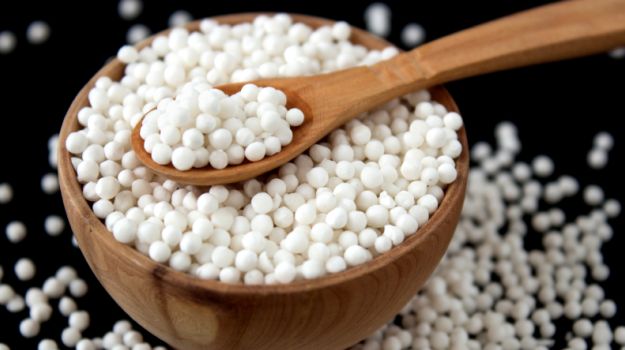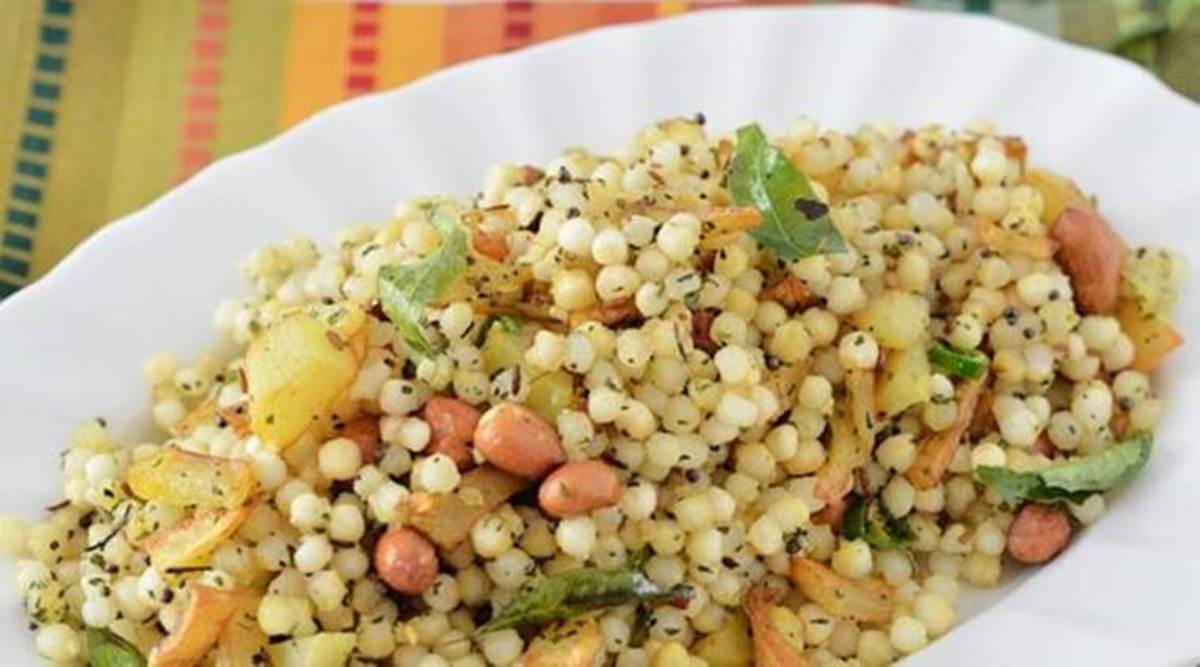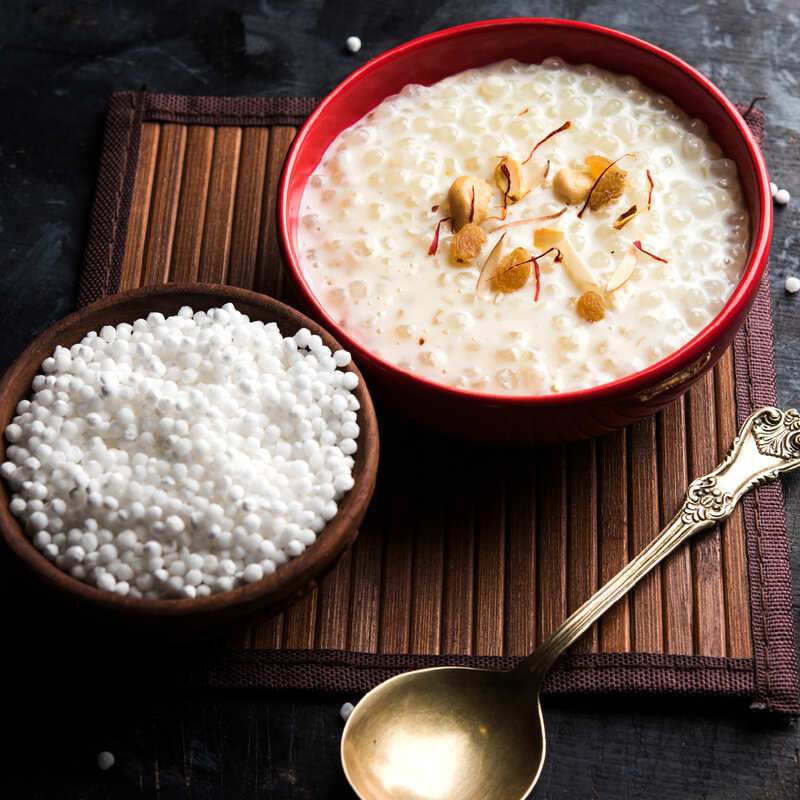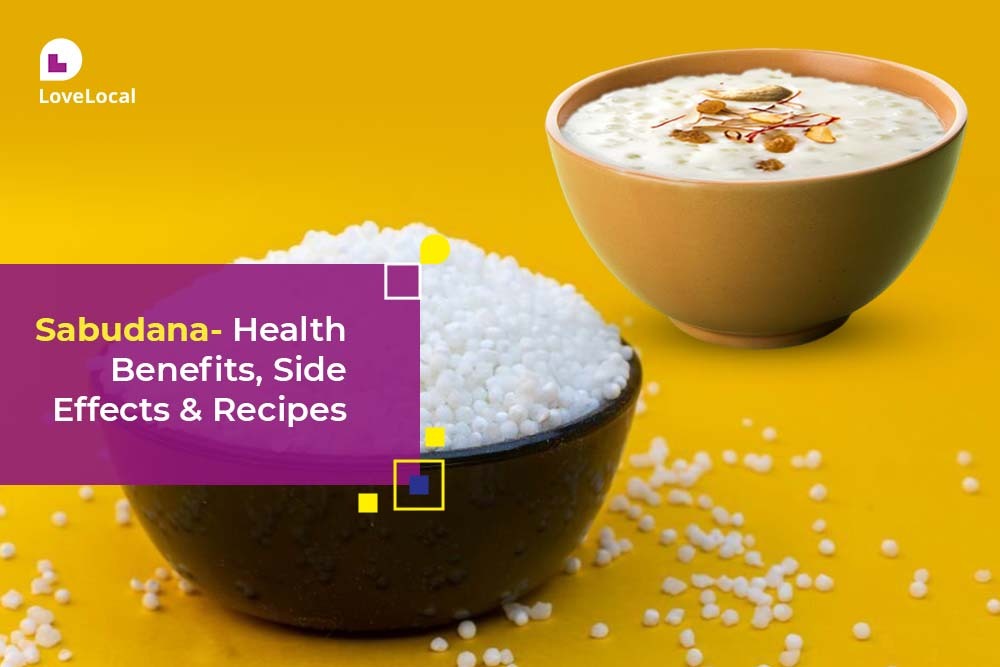Tapioca pearls, also known as Sabudana or sago, come from the roots of the cassava plant, and people use it widely in many cultures around the world. You can use it to make various dishes such as puddings, porridges, and snacks. Sabudana Health benefits are many, for example, it is a very good source of carbohydrates and provides energy to the body. It is also gluten-free and can be a good alternative for people who are allergic to gluten. It is low in other nutrients such as protein and fiber, so you should consume it in moderation and balance it with other nutrient-dense foods.
Health benefits of Sabudana:
If you’re wondering whether sabudana good for health or not, well, there are several health benefits of Sabudana. Here are some of the sabudana benefits:
1. Provides energy:
Sabudana is a rich source of carbohydrates and provides energy to the body. It is a good food option for people who need to maintain high energy levels, such as athletes, children, and pregnant women.
2. Gluten-free:
Sabudana is gluten-free and you can consume it if you are allergic to gluten or have celiac disease. It is a good alternative to wheat, barley, and rye. This is one of the most famous sabudana benefits.
3. Easy to digest:
Sabudana is easy to digest and if you have digestive problems or recovering from an illness, doctors will often recommend it as a food option.
4. Low in calories:
Sabudana for weight loss is common because Sabudana is low in calories and high in carbohydrates. Thus, sabudana for weight loss is a good option for those looking to reduce their calorie intake.

5. Improves bone health:
Sabudana is a good source of calcium, which is essential for bone health. Regular consumption of sabudana can help prevent osteoporosis and other bone-related diseases.
6. Boosts immunity:
Sabudana contains antioxidants that help to boost the immune system and protect the body against diseases. This is one of the most popular health benefits of Sabudana.
7. Good for muscle growth:
Sabudana is rich in protein, which is essential for muscle growth and repair. It is a good food option for bodybuilders and athletes who need to maintain their muscle mass.
Sabudana benefits in pregnancy:
Sabudana benefits in pregnancy due to its nutritional content. For example, Sabudana is rich in carbohydrates, which can provide a quick source of energy to pregnant women and help them combat fatigue and exhaustion. In fact, Sabudana benefits in pregnancy also include it being a good source of folic acid, which is essential for fetal development and can prevent birth defects in the baby. Sabudana is also high in iron, which can prevent anaemia in pregnant women and promote healthy blood circulation.
Sabudana used for hair & skin:
Did you know that you can use Sabudana for skin and hair care due to its various beneficial properties? Here are some ways you can use sabudana for skin and hair:
Benefits of sabudana for skin–
1. Exfoliation:
You can use Sabudana as a natural exfoliant to remove dead skin cells and promote a brighter, smoother complexion. It’s one of the most popular sabudana benefits. To use, mix soaked sabudana with honey or yoghurt and massage onto the skin in circular motions.

2. Moisturization:
You can use Sabudana as a natural moisturizer due to its hydrating properties. To use, mix soaked sabudana with milk or aloe vera gel and apply to the skin as a face mask. This is one of the best benefits of sabudana for skin.
3. Sunburn relief:
You can use Sabudana to soothe and cool sunburned skin. It’s one of the greatest benefits of sabudana for skin. To use, soak sabudana in water and apply the paste to the affected area for 10-15 minutes.
Sabudana uses for hair-
1. Scalp treatment:
Benefits of sabudana also include the fact that you can use it to soothe an itchy, irritated scalp. To use, mix soaked sabudana with aloe vera gel and apply to the scalp as a hair mask.
2. Hair growth:
Sabudana is a good source of protein and can help promote hair growth. To use, mix soaked sabudana with fenugreek powder and coconut oil and apply to the hair as a hair mask.
3. Dandruff treatment:
You can use Sabudana to treat dandruff as it has antifungal properties- it’s one of the most commonly utilised benefits of sabudana. To use, mix soaked sabudana with lemon juice and apply to the scalp as a hair mask.
In conclusion, sabudana benefits are many- you can use it for skin and hair care due to its beneficial properties such as exfoliation, moisturization, sunburn relief, scalp treatment, hair growth, and dandruff treatment. However, it is important to do a patch test before using sabudana for the first time to avoid any allergic reactions or irritation.
Side effects of Sabudana:
While sabudana, also known as tapioca pearls or sago, is generally considered safe for consumption, there are some potential side effects of Sabudana you need to be aware of. Here are some possible side effects of Sabudana:
1. Digestive issues:
Sabudana is high in carbohydrates and low in fiber, which can lead to constipation or other digestive issues if consumed in excess. It is important to drink plenty of fluids when consuming sabudana to avoid constipation.
2. Blood sugar spike:
Sabudana is a high glycemic index food and can cause a rapid rise in blood sugar levels, which can be problematic for people with diabetes or insulin resistance. It is important to consume sabudana in moderation and balance it with other low-glycemic index foods.

3. Allergic reactions:
Some people may be allergic to sabudana, which can lead to symptoms such as itching, rash, hives, or difficulty breathing. If you have a known allergy to cassava, you may be at a higher risk of having an allergic reaction to sabudana.
4. Choking hazard:
Sabudana pearls can swell and become sticky when soaked in water, which can pose a choking hazard if not prepared properly. You need to follow proper soaking and cooking instructions to ensure the sabudana is fully cooked and not sticky. This is one of the most dangerous side effects of sabudana.
In conclusion, while sabudana is generally considered safe for consumption, it can cause digestive issues, blood sugar spikes, allergic reactions, and choking hazards if not prepared properly or consumed in excess. It is important to consume sabudana in moderation and balance it with other nutrient-dense foods.
Sabudana price in India:
The sabudana price in India can vary depending on the brand, quality, and location. Generally, the price of sabudana ranges from Rs. 40 to Rs. 120 per kilogram. However, during the festive season or high demand, the sabudana price may increase. It is also worth noting that different types of sabudana, such as large or small pearls, may have different prices. It is best to check with local markets or grocery stores to get the current sabudana price in your area.
Indian dishes in which you can use Sabudana:
Sabudana is a popular food ingredient in India, especially during religious fasts. Here are some Indian dishes in which you can use sabudana:
1. Sabudana Khichdi:
Sabudana khichdi is a popular breakfast or snack dish made with soaked Sabudana, potatoes, peanuts, and spices. It is a light and healthy dish and you must have commonly consumed during religious fasts. Sabudana khichdi benefits include the various benefits of Sabudana which have been mentioned earlier. In fact, Sabudana khichdi is the most common dish using Sabudana!
2. Sabudana Vada:
This is a deep-fried snack you can make with mashed potatoes and sabudana, mixed with spices and herbs. It is a popular street food in Maharashtra and you can have it with chutney.

3. Sabudana Kheer:
This is a popular dessert made with sabudana, milk, sugar, and cardamom. It is often consumed during religious festivals or special occasions. Sabudana kheer benefits include benefits such as boosting immunity, improved muscle growth, etc. It’s a very popular dish, especially during pregnancy, as Sabudana kheer benefits include the various Sabudana benefits in pregnancy mentioned above.
4. Sabudana Papad:
This is a crispy, thin papad made with sabudana, cumin seeds, and black pepper. It is a popular snack in North India and you can serve it with chutney or pickles.
5. Sabudana Thalipeeth:
This is a savoury pancake you can make with sabudana, potatoes, peanuts, and spices. It is a popular breakfast or snack dish in Maharashtra and you can often serve it with chutney or yoghurt.
6. Sabudana Kachori:
This is a deep-fried snack made with a crispy outer covering of flour and a filling of sabudana, potatoes, and spices. It is a popular street food in North India and you can enjoy it with chutney.
Conclusion:
In conclusion, sabudana is a versatile food ingredient that is enjoyed in many cultures around the world and the health benefits of sabudana are many. While it provides energy and is gluten-free, you should consume it in moderation and balanced with other nutrient-dense foods.



